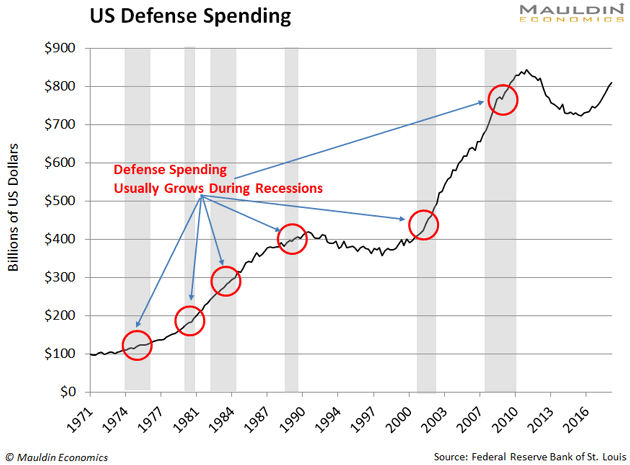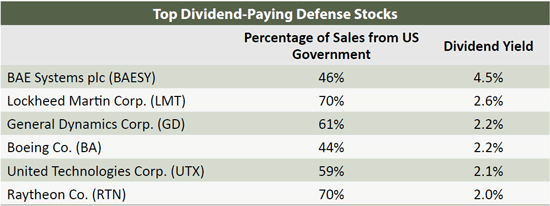You may have read that the U.S. government is under pressure to fund Social Security benefits. There is, however, a far more stable government-backed system that can boost your retirement plans.
I’m talking about the global defense industry. The U.S. military is a behemoth, employing 2.2 million active military personnel. The Department of Defense, which manages the military, is the largest employer in the world. Its workforce equals the entire population of Nevada in size.
No surprise, it takes a ton of cash to keep this machine running. The military budget is nearly $700 billion this year alone. That’s more than twice the military budgets of China, Russia, Saudi Arabia and India combined.
But here’s the kicker: The U.S. spends 90% of its military budget on domestic companies. That means billions of dollars flow into publicly traded U.S. companies every year. And it happens no matter what.
Read: China threatens to reduce Boeing orders, but analyst says options are limited
Defense spending is recession-proof
When the economy slows, as I expect it to in the next 18 months or so, people spend less and businesses scale back.
Consider the global financial crisis. Between 2008 and 2009, U.S. consumer spending fell 8.2%, and domestic investment plunged 30.1%. At the same time, the U.S. raised military spending by 12.2%.
That was not an anomaly. Defense spending grew during five of the six last recessions. You can see this in the next chart, which tracks U.S. defense spending since the 1970s. (Recessions are highlighted in gray.)

There’s a good reason for this. A solid 70% of the U.S. economy relies on consumer spending. That means everything from people buying groceries to paying their energy bills. During a recession, consumers feel the pinch and spend less.
The defense industry, however, is immune to this. There’s no shortage of reasons to spend money on the military. From countering threats abroad (both real and imagined), to supporting veterans and defense-linked jobs, it’s politically toxic to cut military spending. No one wants to touch that hot potato.
This makes defense spending unusually stable. It also means companies that benefit from it earn very stable profits.
Safe and secure dividends
Dividend-paying stocks are my specialty. Those are often the stocks of boring, yet stable, businesses. Stability is why they can pay dividends every quarter.
And, while the defense industry is certainly stable, it’s not known for its dividends. Consider the iShares US Aerospace & Defense ETF ITA, +1.02% The ETF holds a basket of large defense stocks. But it pays only a 1% dividend yield. That’s only half of the 1.9% dividend yield on the S&P 500 Index SPX, +0.80%
Nevertheless, there are individual defense stocks that pay great dividends. Let’s take a look at some of the best options.

Of these, Lockheed Martin LMT, +0.24% which makes a wide range of aircraft, naval ships, missile systems and other defense-related gizmos, enjoys the most stability from government spending. The company is basically an unofficial wing of the U.S. military. It also has the second-highest dividend yield on the list.
BAE Systems BAESY, +0.76% a U.K.-based defense and aerospace company, relies a bit less on U.S. government spending. But its dividend yield is almost twice as high as Lockheed Martin’s.
If you’re looking for reliable income from the defense sector, I think buying individual companies is the way to go.
Robert Ross is a senior analyst at Mauldin Economics whose specialty is income investing. Download his latest special report to find out what dividend stocks he buys in 2019.





